The path to better gaming performance
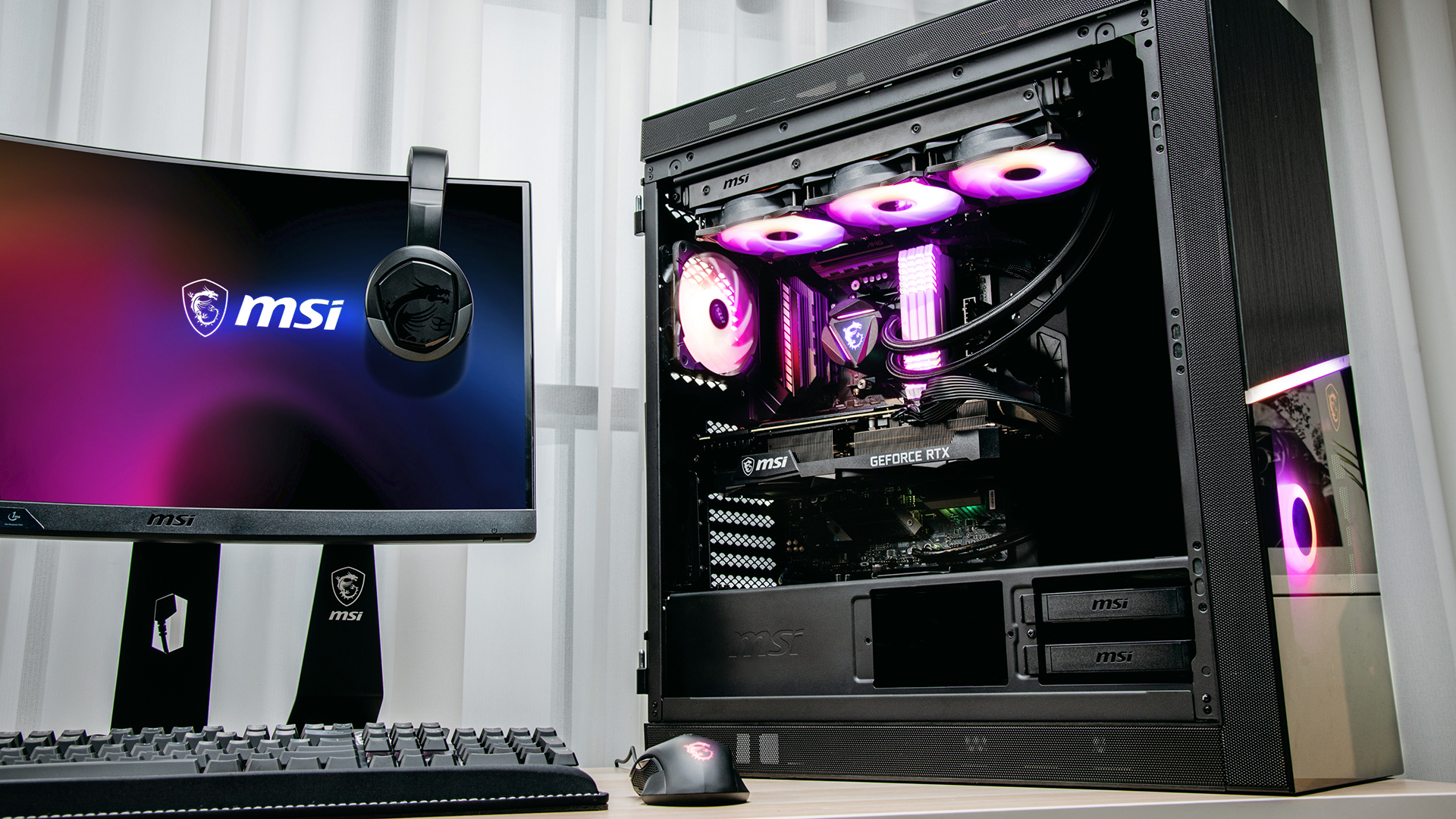
The holiday season will provide many gamers and PC enthusiasts with the time and opportunity to upgrade their rig. Naturally, the first place many upgraders will look is the graphics card as it offers the best potential to dramatically boost performance and is a relatively simple, ‘drop-in’ upgrade.
Now is also a great time to buy, with many great deals available on a variety of amazing cards – especially those which utilise Nvidia’s GeForce RTX 30-series GPUs and their ‘Ampere’ technology. Graphics cards with these GPUs are capable of displaying amazingly immersive and realistic graphics, all the while rendering them smoothly and at high framerates. Core technologies include the following:

Second generation Ray Tracing technology
Ray Tracing is essentially the art of digital realism. The more you can artificially simulate how a surface looks after being affected by both direct and reflected light sources, the more realistic everything will look. These are the calculations that movie makers use rendering farms to compute and yet Nvidia’s GeForce RTX 30-series graphics cards can make do so on-the-fly while you’re in the heat of battle! The second-generation RT cores that adorn GeForce RTX 30-series cards offer 2x the throughput of the original technology!
DLSS acceleration with artificial intelligence
Complex, high-resolution scenes are capable of slowing any graphics card down, but this is what DLSS is designed to remedy. When you encounter taxing, high-resolution objects, Nvidia’s GeForce RTX 30-series cards will use Deep Learning Super Sampling to reduce their resolution and complexity before using AI to re-upscale them without losing significant detail. The result is a significant boost in framerate with minimal visual impact.
Lower latency with Nvidia Reflex
Nvidia Reflex is a group of technologies that aim to reduce latency and cut-back lag at every opportunity. This is especially important for competitive gamers where every fraction of a millisecond counts and can be the difference between glory and defeat.
Reflex can work with G-Sync monitors to reduce latency and also ensures that mouse responsiveness is as high as it can be. Every touchpoint is measured and enhanced to the point where improvements of up to 80 per cent become possible.
Nvenc for video
Nvidia Encoder has two primary benefits. For those performing video encoding, it can off-load tasks from the CPU and move them to the graphics card for better performance and multitasking. Meanwhile, for streamers, its dedicated circuits on the GPU ensures that you can effortlessly livestream without gaming performance being impacted!
Which Nvidia GeForce RTX 30-series card from MSI should you choose?
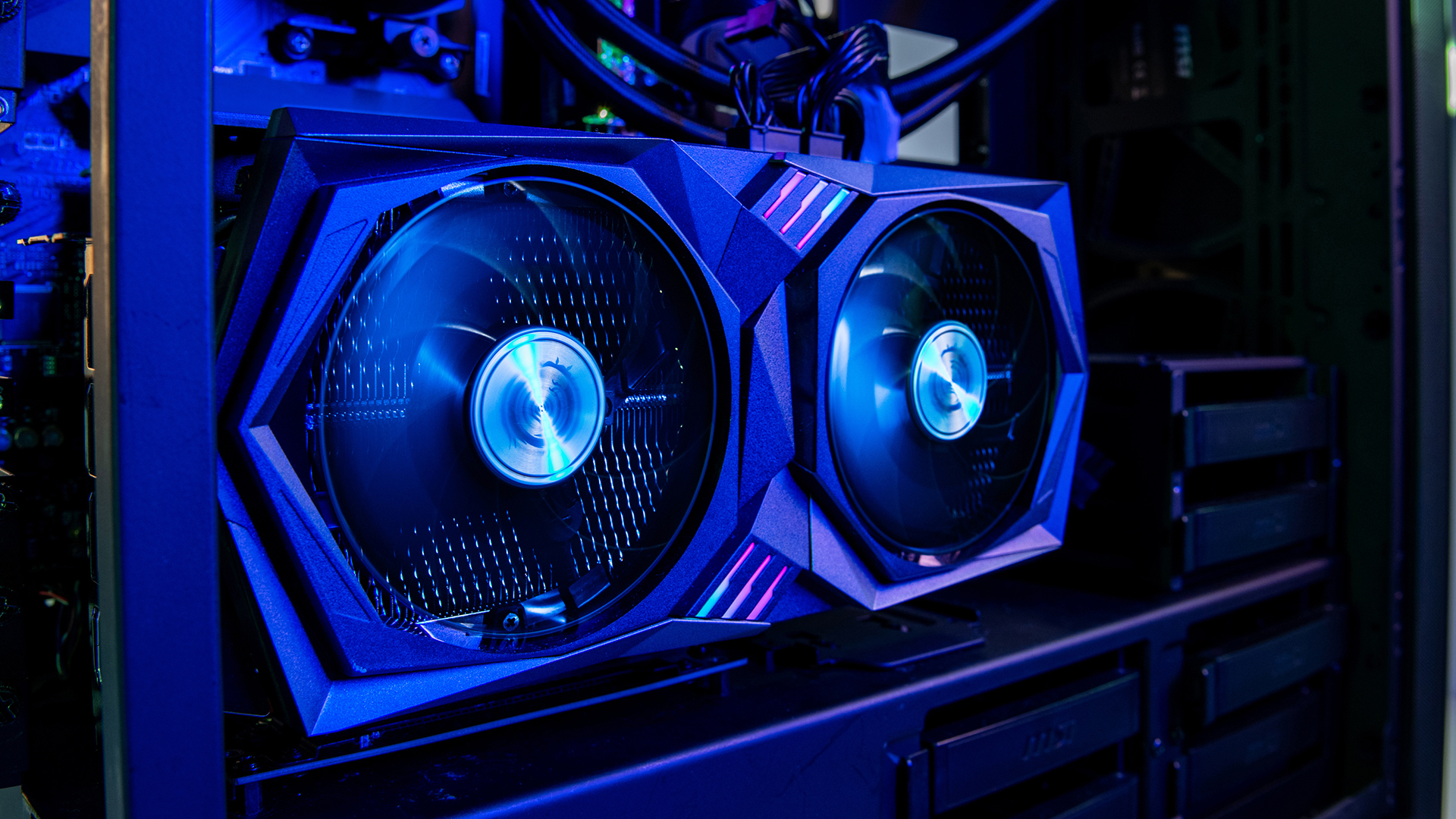
There are many flavours of GeForce RTX 30-series graphics card, but not all are created equal. If you don’t choose correctly you may run into performance ceilings that impact your gaming, overclocking or other performance-related requirements. Conversely, you could waste money on features and horsepower that you simply do not need.
The good news is that MSI has you covered. If offers GeForce RTX 30-series graphics cards across several ranges but we’ll cover three of the main ones below.
MSI GeForce RTX 3070 Ti Ventus 3X 8G OC

MSI’s Ventus range of GeForce RTX 30-series graphics cards illustrates that you needn’t compromise when working to a budget. It features all the inherent Nvidia technologies and it’s cooled by three of MSI’s special ‘Torx Fan 3.0’ fans. These work in conjunction with precision-machined heat pipes that make it compatible with MSI’s ‘Zero Frozr’ silent-running mode when top performance isn’t required. Build quality is top notch, featuring a solid backplate that’s attached with thermal pads, plus anti-bending technology and a support bracket. If you want a new no-nonsense graphics card to slap inside your PC, a Ventus card needs to be on the shortlist of every budget buyer.
MSI GeForce RTX 3060 Gaming X 12G
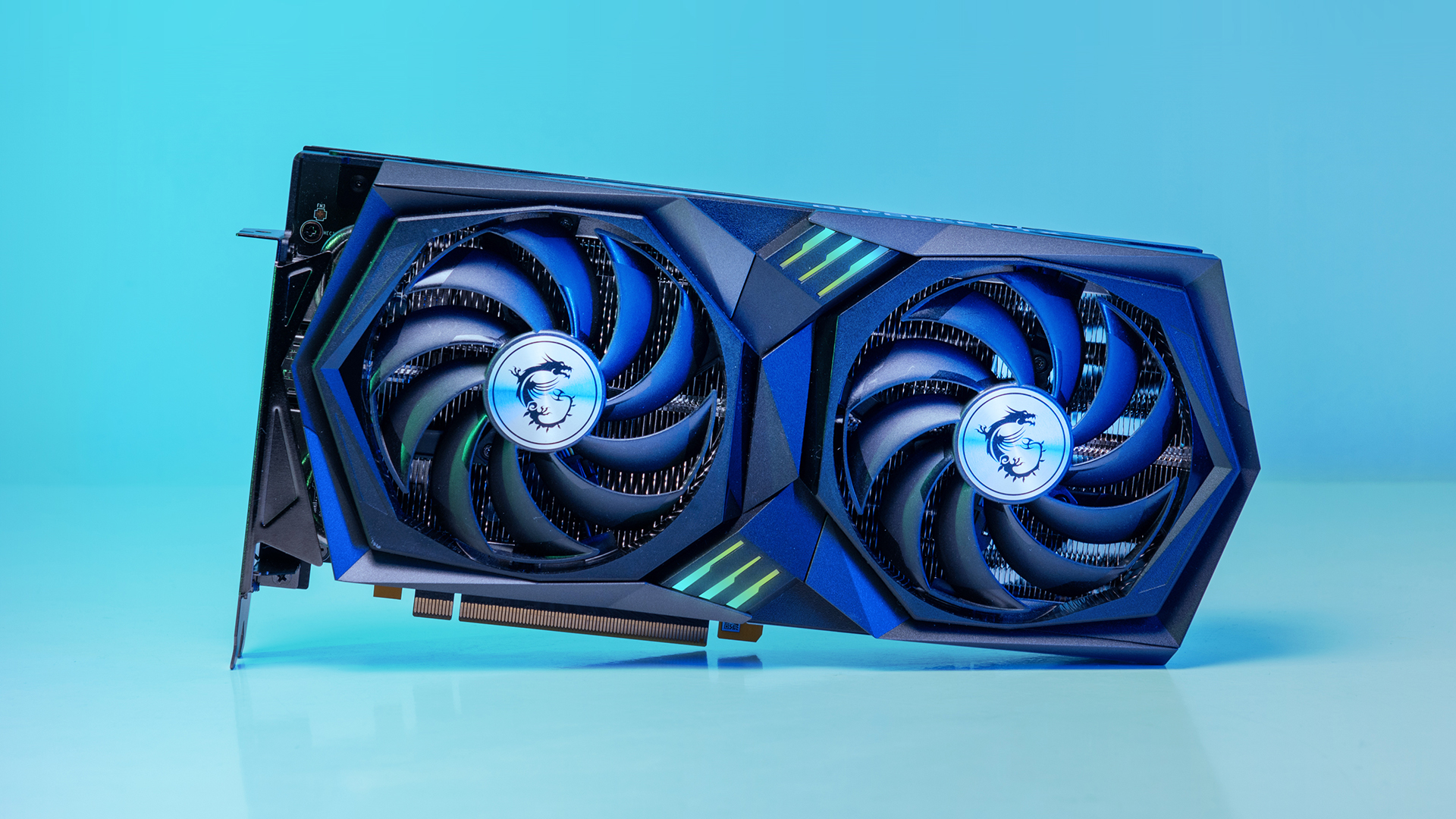
For many gamers, the popular MSI GeForce RTX 3060 Gaming X 12G represents the sweet spot combination of performance, looks and features. Adorned in glorious MSI Mystic Light RGB, that can be synchronised with compatible peripherals including headset, mouse, keyboard, motherboard, PSU and monitor, it looks as good as it functions.
In addition to Nvidia’s GeForce RTX 30-series benefits, it features 12GB of GDDR6 RAM to support the most-immersive textures in top AAA-titles. It also works with MSI’s popular Afterburner app for overclocking and MSI Center for quick-and-simple configuration and profile switching.
It’s cooled by some of MSI’s top-tier tech too, and two Torx Fan 4.0 fans are included. These feature dual bearings for better performance, longevity, reliability and acoustics. Plus, it links pairs of blades in a revolutionary ring design to increase air pressure and better focus it onto the heatsink. This all works in conjunction with precision-machined core pipes that run through the heatsink itself, thereby maintaining maximum contact which ensures the entire surface area is used to cool the GPU. It’s so efficient that it can run completely silently with 100 per cent passive cooling when required.
Ultimately, it means the MSI GeForce RTX 3060 Gaming X 12G is a great, all-round choice.
MSI GeForce RTX 3070 Ti Suprim X 8G
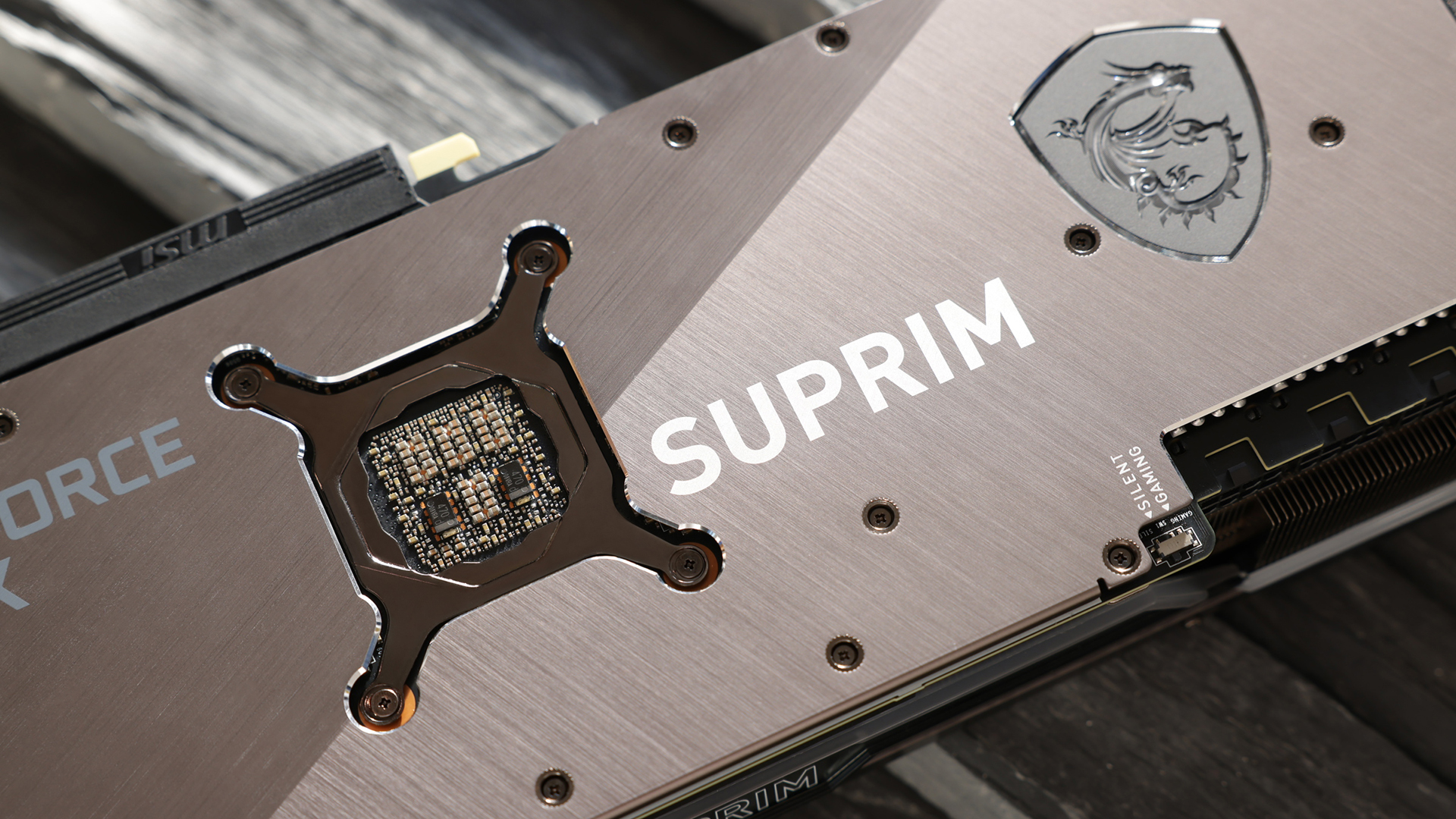
If a graphics card represents more than just a tool for gaming, then MSI’s Suprim range is for you. This goes beyond simply running games comfortably at stock speeds, there’s plenty of headroom to push boundaries.
The cool, chiselled heat sink is not just for looks, it represents the bleeding-edge of years-long industrial design evolution. This ‘Tri Frozr 2S’ technology uses three of MSI’s best ‘Torx Fan 4.0’ fans to completely cover the heatsink which also completely covers the memory modules for enhanced stability.
It captures heat from the GPU via a nickel-plated, copper baseplate before drawing it away with an array of precision-machined core pipes. Even the heat sink’s fins are optimised – using MSI’s bespoke ‘Wave-curved 2.0’ edges which enhance airflow to benefit both thermal dynamics and acoustics. The brushed-metal backplate further improves its passive cooling prowess, as do the special heat pads that connect it to the card. It all means that MSI’s Suprim cards can run silently to incredible limits before the fans are even needed.
A dual-BIOS makes it effortless to switch from high-performance Gaming to Silent mode. Meanwhile, overclockers will love MSI’s addition of extra fuses to protect all the circuitry and chips from electrical damage.
The substantial cards substantial hardware doesn’t stop there. To support it, an extra copper layer has been added to its PCB for both enhanced thermal performance and rigidity. There’s also a bespoke, metal, anti-bending arm to keep the card straight plus, a special Suprim support stand to prevent any potential sagging.
Overclockers will love the native support for MSI’s Afterburner app while the MSI Center control panel makes it simple to switch performance profiles and configure the stylish Mystic Light RGB detailing.
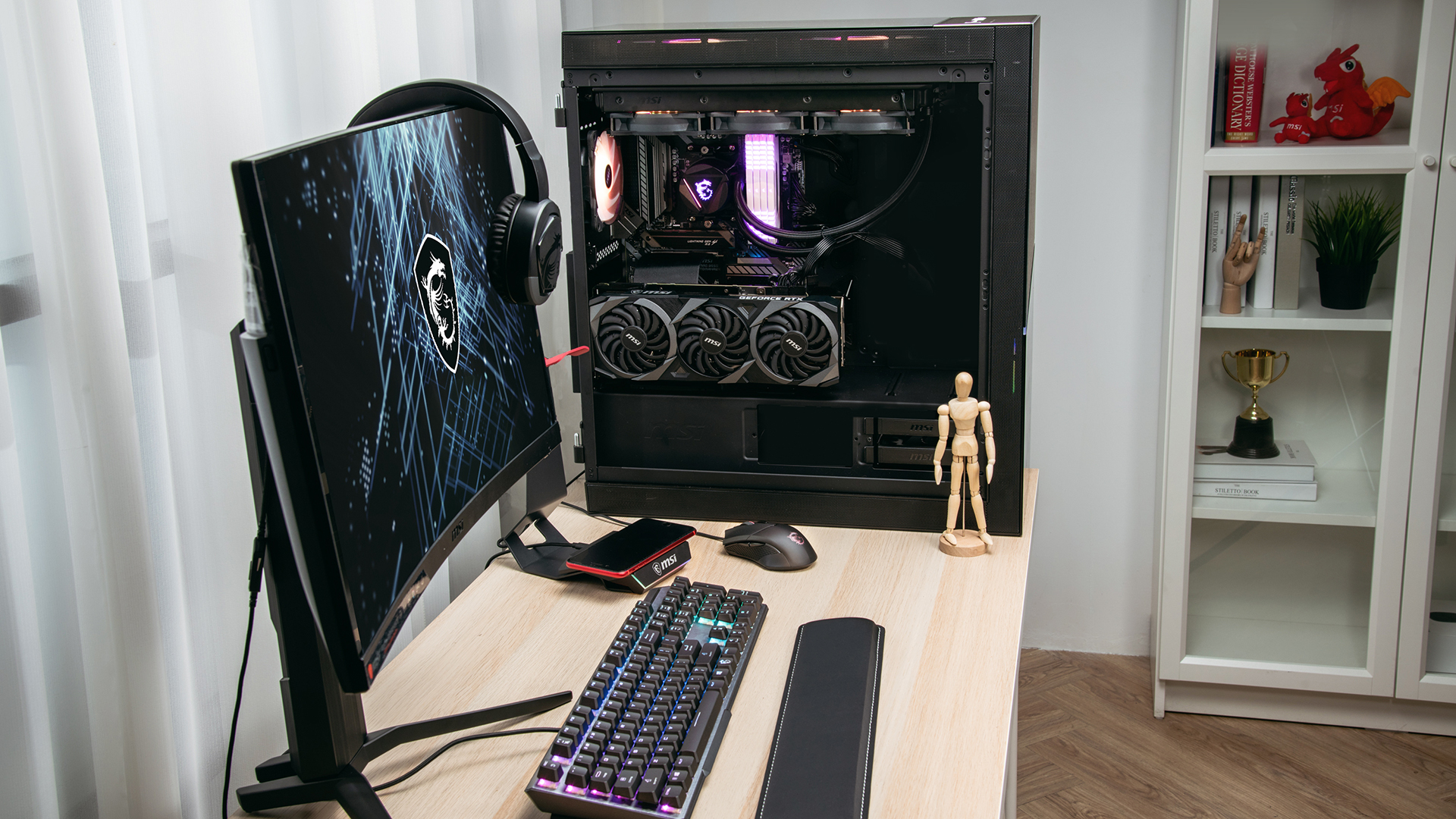
Competition time!
Whichever MSI GeForce Nvidia RTX 30-series graphics card you choose, be sure to enter MSI’s “Game Up. RTX On” competition where you could win an ultimate gaming bundle worth $2,000! Click here for details!

Sign up for breaking news, reviews, opinion, top tech deals, and more.